
- Home
- News
- Analysis
- States
- Perspective
- Videos
- Education
- Entertainment
- Elections
- World Cup 2023
- Features
- Health
- Business
- Series
- Economy Series
- Earth Day
- Kashmir’s Frozen Turbulence
- India@75
- The legend of Ramjanmabhoomi
- Liberalisation@30
- How to tame a dragon
- Celebrating biodiversity
- Farm Matters
- 50 days of solitude
- Bringing Migrants Home
- Budget 2020
- Jharkhand Votes
- The Federal Investigates
- The Federal Impact
- Vanishing Sand
- Gandhi @ 150
- Andhra Today
- Field report
- Operation Gulmarg
- Pandemic @1 Mn in India
- The Federal Year-End
- The Zero Year
- Premium
- Science
- Brand studio
- Home
- NewsNews
- Analysis
- StatesStates
- PerspectivePerspective
- VideosVideos
- Entertainment
- ElectionsElections
- Sports
- Loading...
Sports - Features
- BusinessBusiness
- Premium
- Loading...
Premium
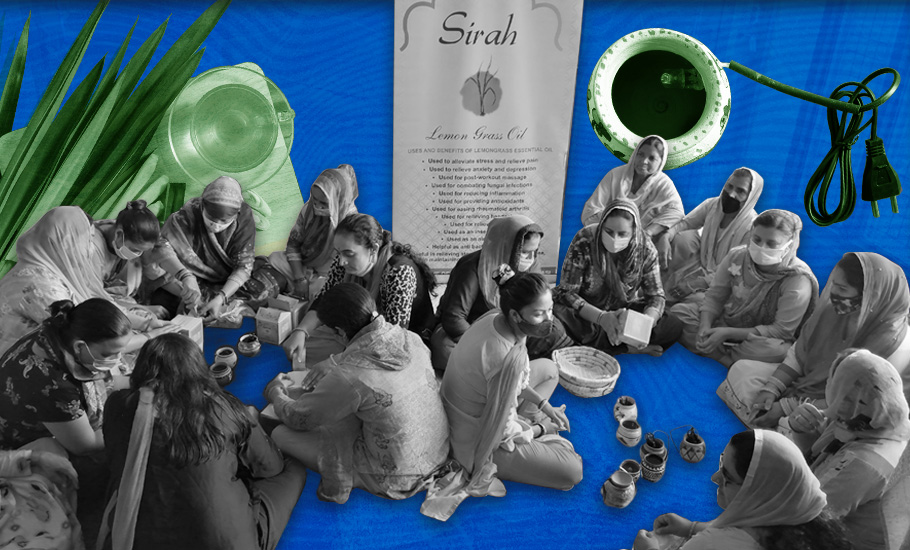
How rural women in J&K discovered the sweet scent of self-reliance

Back in 2016, Tilak Raj Brat, a farmer in Sirah village of Jammu and Kashmir’s Reasi district, was fed up with the menace of monkeys. Every time he and other farmers grew maize, wheat or rice, the monkeys would eat them up or destroy them. That is when scientists from Council of Scientific and Industrial Research-Indian Institute of Integrative Medicines (CSIR-IIM), Jammu and Lucknow,...
Back in 2016, Tilak Raj Brat, a farmer in Sirah village of Jammu and Kashmir’s Reasi district, was fed up with the menace of monkeys. Every time he and other farmers grew maize, wheat or rice, the monkeys would eat them up or destroy them.
That is when scientists from Council of Scientific and Industrial Research-Indian Institute of Integrative Medicines (CSIR-IIM), Jammu and Lucknow, offered to help.
They suggested to the disappointed farmers to grow lemongrass instead of traditional maize, wheat and rice crops as the aromatic grass is not harmed or eaten by the primates. Moreover, its oil is extensively used in aromatherapy and medical practitioners also recommend the oil for reducing inflammation, easing indigestion, curing headaches, combating fungal and bacterial infections, and relieving rheumatoid arthritis pain.
Brat was the first farmer to take up the suggestion and grow lemongrass initially over 8 kanals of land (1 kanal = 0.125 acres).
“They arranged and transported the lemongrass saplings from Lucknow and offered to distribute them for free to farmers in our village,” he says. “But except me, no one grew this new crop that year since people didn’t know much about this ‘medicinal grass’ until then.”
When Brat harvested the first crop, he took it to CSIR-IIM’s Chattha-(village’s name) based oil processing unit in Jammu, about 40 km away, to get the lemongrass oil extracted, since there was no machine available in his village or district.
Having no option of marketing or selling the oil in his village then, the farmer sold it to CSIR-IIIM scientists till 2019.
But after that, Brat sold the same lemongrass oil at more than six times the initial price and increased his profits by a huge margin. He also increased the net sown area of the crop to 12 kanals. The income from the sale now runs into several lakhs.
“This year, I’m planning to grow lemongrass over 35 kanals of my and my brother’s land,” an elated Tilak Raj Brat says.
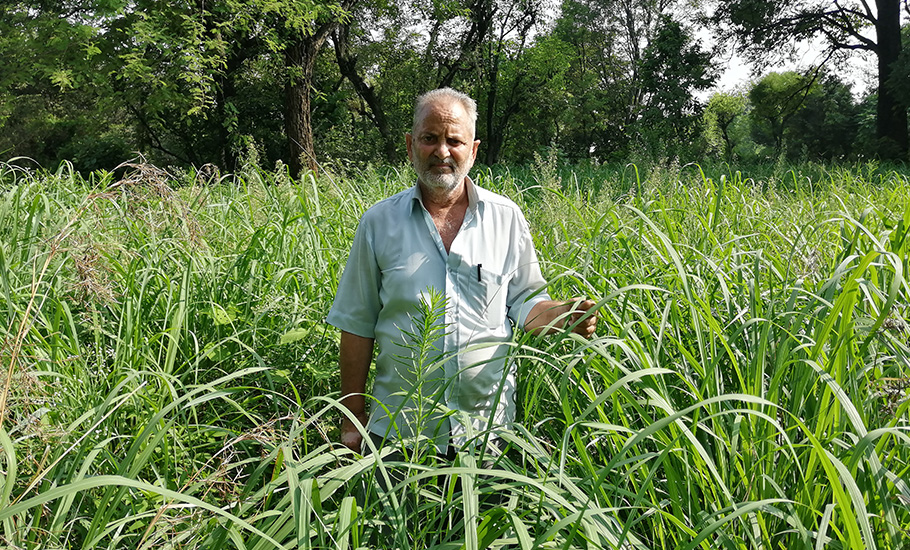
How did Brat’s income go up?
In 2019, Dheeraj Gupta, a principal secretary ranked bureaucrat, visited Brat’s village under the Union territory government’s “Back To Village” programme.
Brat and several other farmers who had begun growing lemongrass by then highlighted the difficulties in transporting their produce to CSIR-IIIM’s oil processing unit in Jammu and demanded that a similar unit be installed in their village.
Soon, an oil processing unit was installed at Sirah. This reduced Brat’s expenditure.
Thereafter, he studied marketing options and started selling the oil in small packages at higher rates, thus earning extra income.
Involving rural women
According to Kailash Devi (41) of Sool village, a self-help group (SHG) member in Reasi who grows lemongrass over 8 kanals of agricultural land, when local officials planned to set up the oil processing unit, they asked more villagers from nearby villages to take up lemongrass farming, which they did happily.
As more farmers switched to the medicinal grass, there was an increase in oil production. District Development Commissioner, Indu Kanwal Chib, who was behind the setting up of the oil processing unit, then began involving unemployed women of Sirah, Sool, Kakrayal, Kotla and other villages in purchasing the oil from the farmers and packing it in small and attractive bottles through National Rural Livelihood Mission (NRLM). The women were also encouraged to do marketing and sale of their products either through government exhibitions or other media.
“Our SHGs have been selling lemongrass oil and other products to the Indian Army, universities, government offices, civil secretariat offices and other people, and earning lakhs,” says Rekha Devi, 35, of Sool village, who believes that her association through NRLM has earned her self-respect and self-reliance.
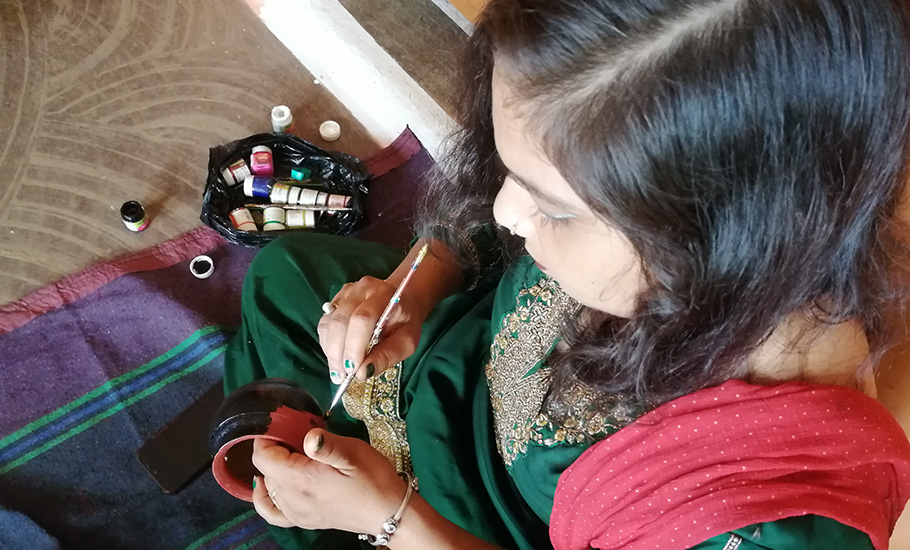
SHGs shed new light
The self-help group members in Reasi, comprising unmarried women as young as 22-year-old Sheetal Devi and as old as Raj Devi, in her sixties, prepare a variety of products made of jute, lemongrass, wild grasses, earthen clay pots, spices and leaves. These include aromatic lemongrass oil lamps, Chhabdi (a traditional basket made up of wild grasses), jute bags, Kaleere (a silver or gold embellished, umbrella shaped ornament that is attached to the bride’s Chooda or bangle {source: utsavpedia}), teddy bears, papads, and spices.
But the aromatic lemongrass oil lamps are a key source of income for these rural women. The lamps used as mosquito repellents and room fresheners, are made up of painted earthen clay pots. An electric wire is fitted inside these pots and then lemongrass oil is poured on the lids of the pots to give homes and offices an aromatic ambience.
“Last year, we earned around Rs 4-5 lakh from the sale of lemongrass oil lamps to J&K Tourism Department, Shri Mata Vaishno Devi Shrine Board Katra, Shrine Board Shiv Khori, Indian Army, different government department and other people,” says Jugal Magotra, blcok programme manager of NRLM in Panthal block.
With several hundred lemongrass oil lamps ready to be sold, the women SHG members at Sool expect their net income to touch Rs 8-9 lakhs in the coming days.
Sheetal Devi (22), a class 12 student and the youngest SHG member, says: “With 140 women working in 14 self-help groups of Sool village, the average income of individual SHG member is around ₹2,000 per month when we get enough work to do. Otherwise it hardly reaches ₹1,000 per month.”
“But our members have been exploring and studying recent innovations in agriculture, horticulture, apiculture, sericulture, pisciculture and fungiculture. We’re pretty sure that the income of our women SHGs will go up soon when they’ll get more work opportunities for which they’re striving hard,” she hopes.
Jammu and Kashmir Rural Livelihood Mission (JKRLM) has so far established 48,423 self-help groups and linked them to various financial institutions. A deadline of September 30, 2021 has also been set by the UT government to establish 11000 more SHGs by ensuring social mobilisation of rural women, besides identifying various commercial activities suited for the rural economy.
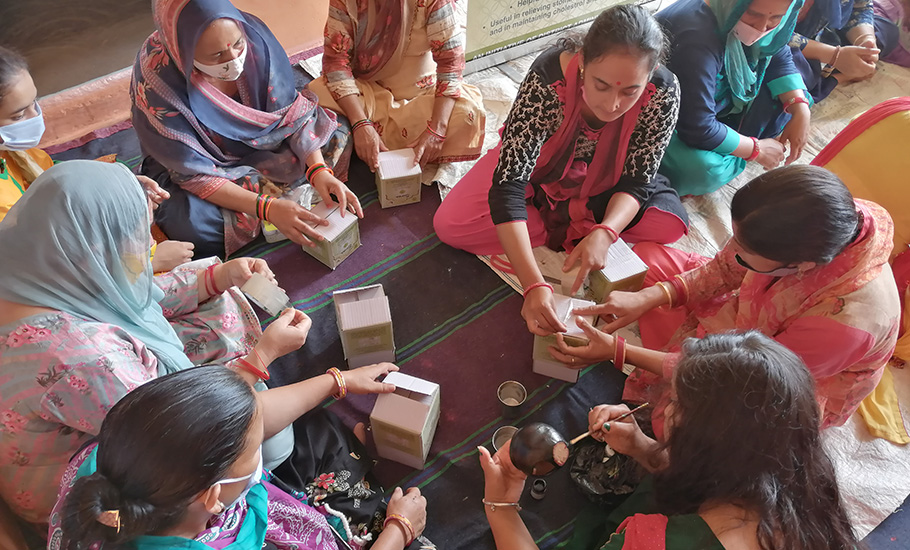
The (JKSRLM) Mission has also trained 8,039 Mahila Kissans (women farmers) in agro-ecological practices, besides establishing an all-women dairy FPO of 250 SHG members in convergence with the National Bank for Agriculture and Rural Development (NABARD).
According to Dr Syed Sehrish Asgar (IAS), mission director, Jammu and Kashmir Rural Livelihood Mission, there are 4,16,037 women working as self-help group members in Jammu and Kashmir, mostly from the marginal backgrounds.
Baramulla district in Kashmir province has the highest 49,132 women in SHGs followed by 43,235 in Kupwara, 40,926 in Jammu district, 38,359 in Budgam, and 32,255 in Anantnag. Kashmir Division’s Srinagar District has 4,625 women in SHGs while the number is 5,183 in Shopian, the hotbed of militancy, 6,931 in Jammu’s Ramban, 8,160 in Kishtwar, and 8,872 in Poonch. In Reasi District, there are 1,854 women self-help groups with 15,402 women getting direct employment from them.
Work from WhatsApp
Women self-help groups in Reasi are not averse to adopting technology and use WhatsApp for their work. If any member gets an idea, they share it on a WhatsApp group which are managed by cluster heads and block programme managers (BPM) of NRLM.
Thereafter, the financial requirements are discussed with the concerned BPM, deputy commissioner and other senior NRLM functionaries, who then help the SHGs in getting the loans sanctioned and technical expertise provided by experts to convert the ideas into products.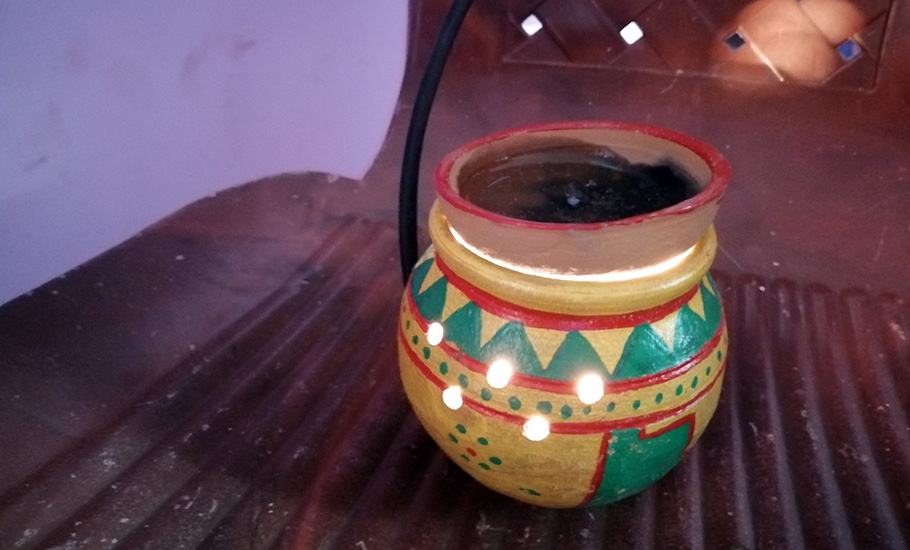
Products like lemongrass oil lamps, handicraft items, papads, spices etc. are made by the women self-help groups at a common place—usually an SHG member’s home.
“Normally all women SHGs work for one hour every day. But when we get extra workload, we increase the work schedule to meet our targets,” says Asha Devi, 26, of Panthal Block.
‘A future with lemongrass’
There are 1,854 women self-help groups in Jammu and Kashmir’s Reasi district. Of them, only a limited number of SHGs like, Manvi Group, Saathi Group, Parvati Group, Kuldev Group, Pooja Group and some other groups in Pouni Block, have been cultivating lemongrass and trading its products.
“We’re encouraging other women to cultivate lemongrass and trade its products,” says Bimla Devi, the Sool village head, adding, “And we’re getting tremendous response from the womenfolk.”
“Our women SHGs see a future in lemongrass farming and similar other agricultural practices. This is the reason some of them have been mulling to install subsidised oil extracting and solar drying machines, on their own this year,” she says.

